Frontiers Developments’ F1 Manager 2024 releases tomorrow and we have been hard at work making blunder after blunder so that you don’t have to. While much of the gameplay feels unsurprisingly similar to its predecessors, there are some key differences this time around that are well worth knowing, and of course, many players will be series newbies.
Therefore, we’ll run you through a tonne of tips and tricks to help you maximise your F1 Manager 2024 experience. We’ll start with the fundamentals for new players and then cover all of those extra details to help set you apart from your rivals.
The Fundamentals (Off-Track)
Starting out your new career mode can be a bit overwhelming. But fear not, all will become clearer as you move through the season and get used to the gameplay flow. The main career mode screen consists of tabs, each containing important information about your team’s situation, allowing you to manage your team between races. You will receive prompts in your inbox, encouraging you to take certain actions. Pay attention to these and start the game with tutorial mode switched on so you can understand what you’re looking at.
Design is key
Whether you are creating your own 11th F1 team, or managing an existing outfit, the single most important ingredient for a successful result is a fast race car. You achieve this by developing car upgrades as efficiently as possible and this is something you won’t always be prompted to do.
Head to the cars tab, then click ‘car parts development’ and begin a new design project. Every one of the six car parts will improve your car in a particular area, so the key here for new players is simply to remember to keep these design projects coming. We’ll cover more of this in detail further down below.
Facilities
You can also invest some of your budget in upgrading or refurbishing your facilities. These have various impacts on the overall state of the team, as well as the company bank account. Balance your facility upgrades with your budget: a small team may need to compromise more in certain areas than a well-funded outfit.
Some specific advice on this front would be to upgrade your helipad, tour centre and hospitality area immediately. These upgrades should be relatively affordable, and will help your team earn more money throughout the season: no point leaving them until later!
The design centre and CFD simulator are good upgrades too if you have the cash, as they will increase your car development capabilities. Don’t get too hung up if your projected budget is coming up red, you can make savings down the line and bring in more income with sponsorship payouts and objectives.
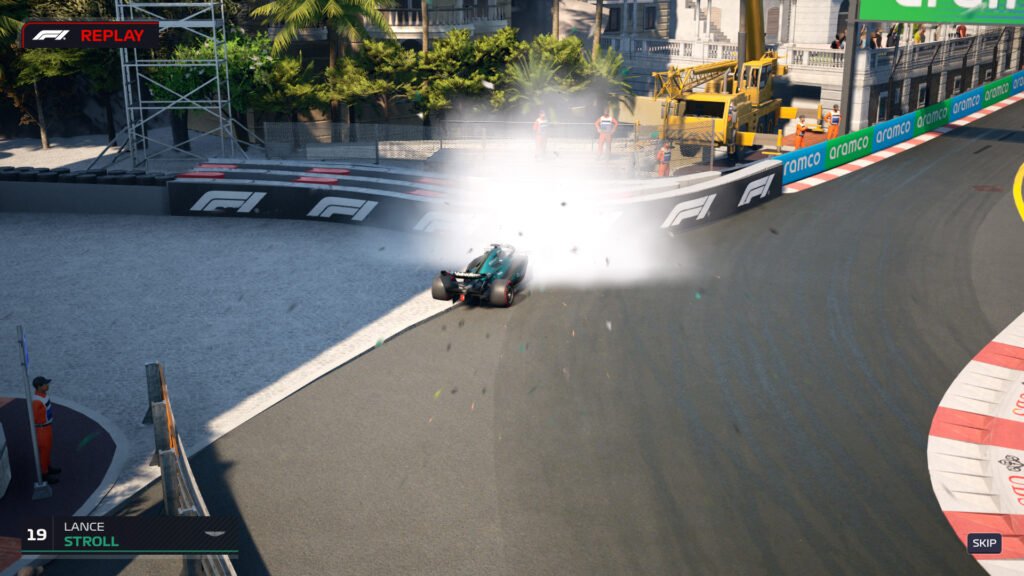
On-Track Fundamentals
Grand Prix weekends normally consist of three practice sessions, a three-part qualifying session and the race. Some weekends feature an alternative sprint format, with two of the three practice sessions replaced with sprint qualifying and a short sprint race. You can choose whether to simulate or manage each individual session.
Practice makes perfect
It’s entirely up to you how you tackle each weekend, as progress can be incredibly slow when manually managing every step of the way. However, if results aren’t going your way, one key way to improve your chances is by manually managing the practice sessions, at least the first one.
This is how you maximise your car set-up for the weekend, and this will find you those extra few tenths of a second per lap, as well as helping the drivers feel more prepared. It’s not just about sending them out on circuit and leaving them to it though.
Just like the previous games, nailing the perfect set-up is a slider-based mini-game. Send drivers out for a 20-lap run, but bring them back into the pits as soon as the light blue driver feedback icon reads 5/5. Head for the car set-up screen, and this is where you can make all of the difference.
Different slider adjustments will affect the overall balance of the car in different ways and your aim is to try and get every area of the car feeling optimal, but finding the sweet spot. The blue window for each area of balance ie. (Oversteer, braking stability etc. signifies) the optimal window, and as you progress through practice runs and the driver gives you feedback, this blue window will decrease until the optimal point is found.
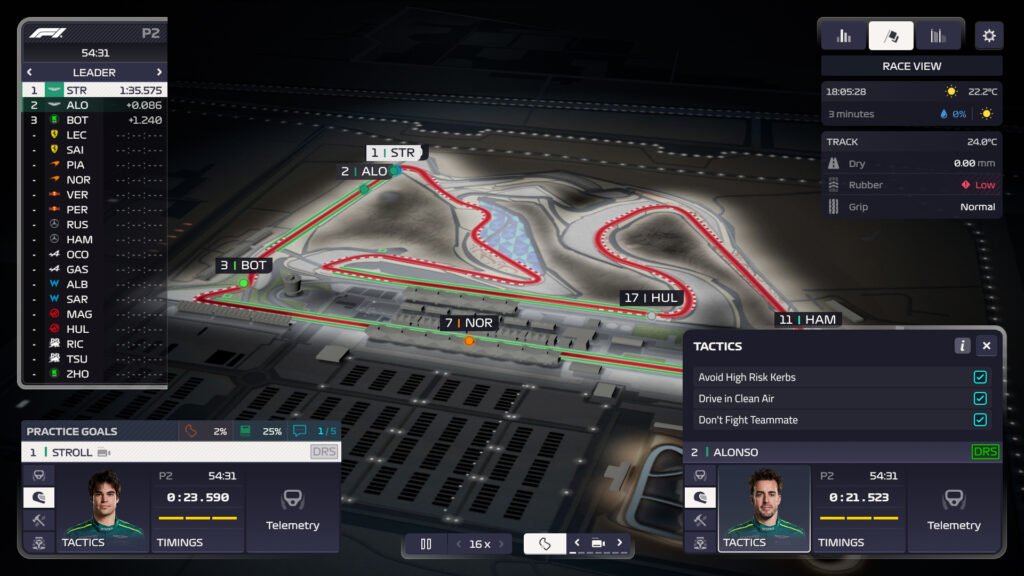
Changing the rear-wing and front-wing angle will get you in the right ballpark for the ‘Straights’, ‘Oversteer’ and ‘Cornering’ markers, so this is the best place to start. Then use ‘Anti-Roll Distribution’ to get ‘Traction’ and ‘Braking stability’ nearer the target area.
‘Tyre camber’ is a good alternative for all-around adjustments depending on what direction you are needing to go, and ‘Toe-out’ will balance cornering and braking stability against one another. Obviously, you can spend time writing down a cheat sheet for all of this, but I find that by simply playing the game, you will quickly get used to what sort of adjustments do what. You may have to go back and tweak things a few times to make sure every area is within its target window.
Some other important notes on set-up: unlike real life, rain doesn’t affect things so if your set-up is 100% in the wet, it will also be 100% in the dry. Don’t stop doing set-up runs just because your driver is satisfied, keep tweaking little things to find those last improvements to make 100%, even if it’s just one click on one setting.
As for the number of runs, you can comfortably fit in two full set-up runs per session, but also you can start a third, even if you can’t finish it. Do this, as the feedback carries over to the next session.
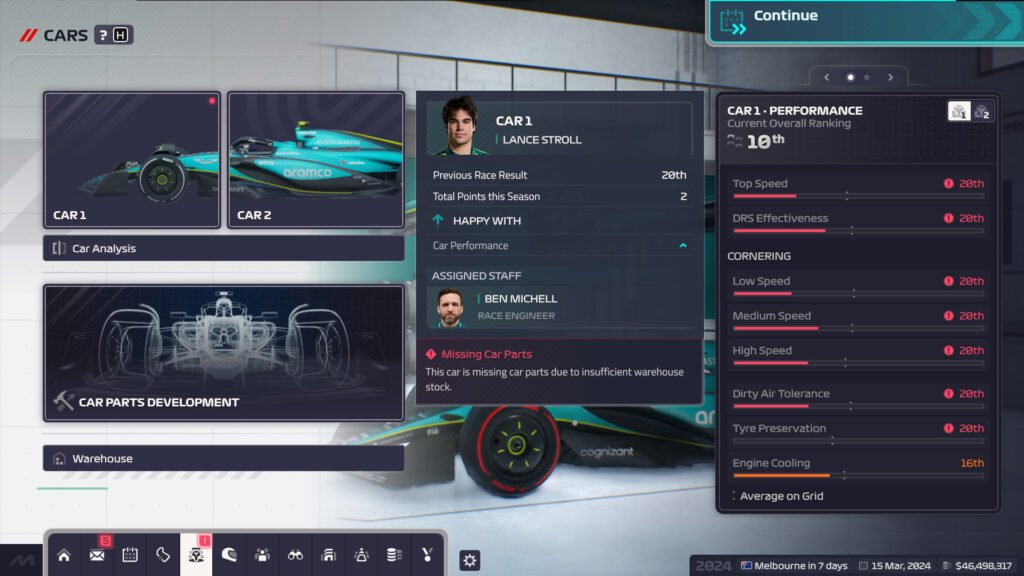
And finally, we know this work can become tedious, so don’t burn yourself out with it. Simulating practice sessions is a good way of saving time when you get further into your career mode, you just have to accept a sub-optimal set-up. The most effective time to manually manage them will be on sprint weekends, with only one free practice session before sprint qualifying. You can quickly find yourself with a 65-90% optimal set-up, rather than a 30% one when simulating.
And even then, a quick Google search for an F1 Manager Setup Calculator will sort you out anyway, so there’s always that if you want to save a bit of time…
The green light
Let’s talk about the race itself. Using the suggested pitstop strategies is a good place to start, but you need to be able to adapt mid-race depending on the situation. It may be worth splitting your strategy across both cars so that if something unusual happens in the race you will likely benefit with at least one driver.
Always take advantage of safety cars and VSCs, as they will give you an opportunity for a cheap pitstop. You can lose some positions, but nowhere near as much time as pitting under green due to the reduced speed difference.
In a full safety car, the pack bunches up anyway, allowing you to get right back up within a few seconds of the race leader. If there is a red flag, make sure you take a brand new set of tyres, as it doesn’t cost you any time at all.
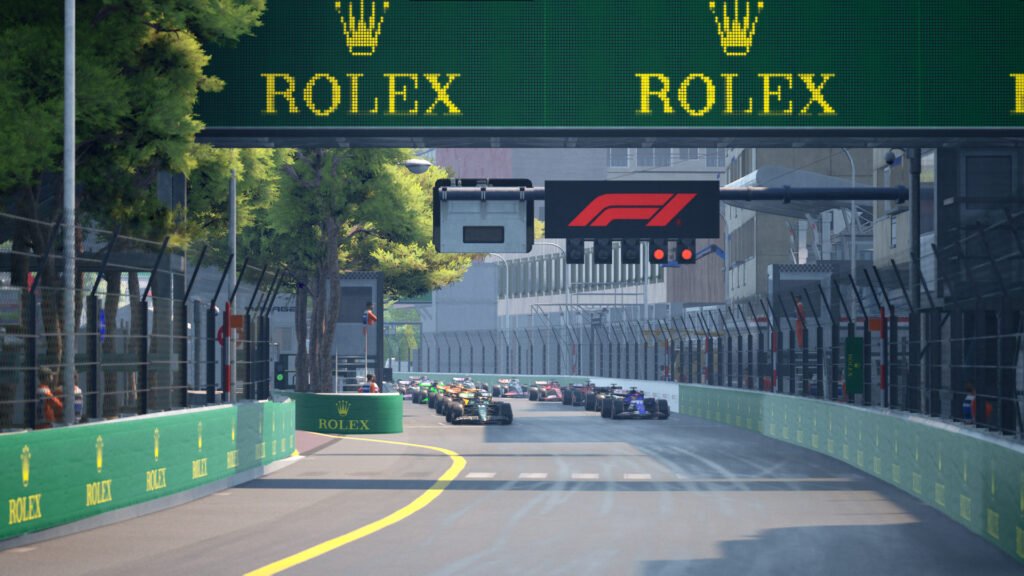
F1 Manager 2024 tends to favour the brave, but not always. You will need to experiment with different race strategies, but often going more aggressive on softer tyres with more pitstops is better than a conservative, hard-tyre strategy with fewer stops.
Overtaking is easier and more common in F1 Manager 2024 than it is in real life, and often the slower car has no answer for the faster car coming up behind it. Leave your ERS battle assist switched on for the races so that your drivers can optimally deploy their energy as they do in real life.
If there is less than a second between two cars on circuit, the chasing car will get DRS assistance, which increases their straight-line speed to aid with overtaking. You can try to take advantage of this by pushing harder to stay within a second of the car in front, or by building a gap of over a second to the car behind.
Driver tactics are another tool at players’ disposal. Don’t forget to use these in intense battle situations; whether it’s to make one driver defend like Kevin Magnussen, or to push your driver into making that crucial overtake on a car that’s holding them up.
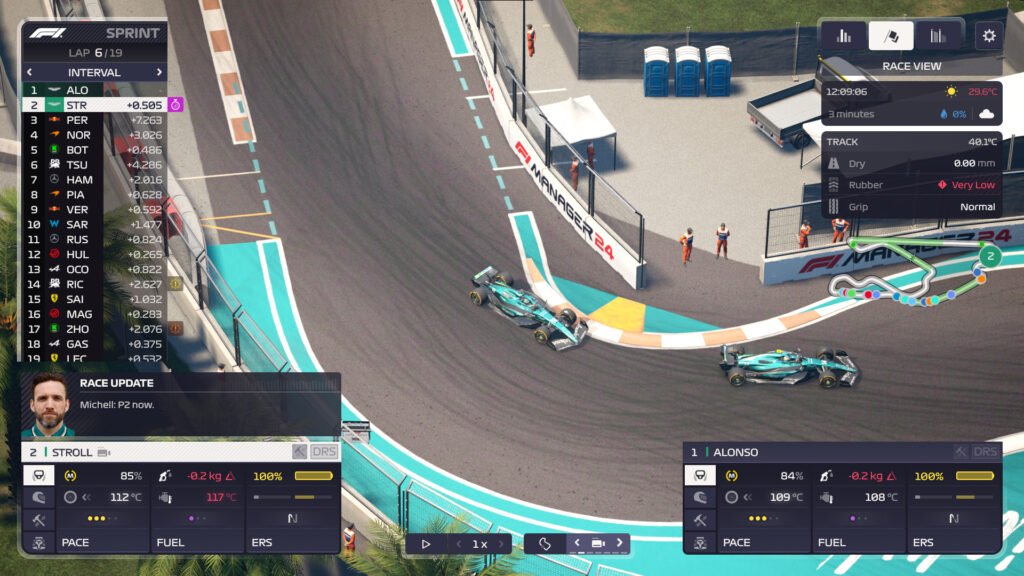
Another way to force an overtake is to try an undercut pitstop strategy. This is when you pit your driver early to give them fresh tyres and clean air so they can jump the car ahead. You may have to do some tyre saving later to compensate, however, so be wary of pushing your tyres too hard for too many laps: it may cause a puncture. Try not to let your tyres drop below the white line…
One final fundamental mid-race tip is to manage your temperatures, both the tyres and the engine. Hot parts wear quicker, and this is signified by the colour of the temperature reading turning orange and then red.
Pushing the tyres too hard results in overheating, which vastly accelerates wear rates and it can take a lot of slow driving to get these temperatures back down. My tip is to back off slightly if you notice this number turning orange to prevent it from going red.
You can still push when required to close a gap or break away from a rival, but use it in small bursts to stop it from rising too high. This will drastically improve your tyre life and maintain your strong pace for longer.
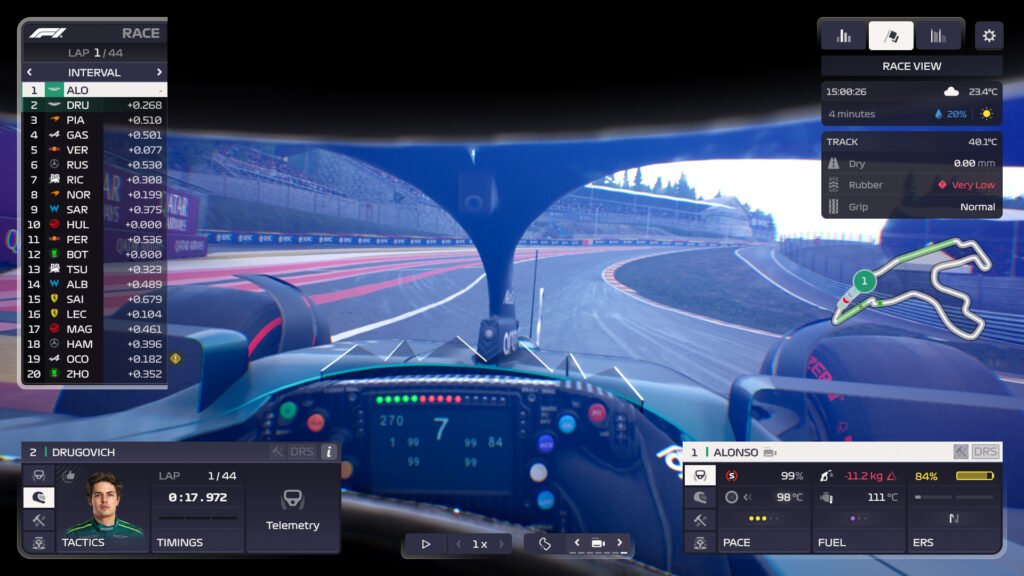
Advanced
So, the fundamentals are now covered, and this is where it gets interesting. There are some specific tactical exploits you can utilise and seemingly small decisions that might just make the difference in a long-term title fight.
Mentality Hub
A new feature for this year’s game is the Mentality Hub. You have to keep your team members and drivers happy for them to perform at their best. If one of your drivers is feeling upset about something, you can find out exactly what it is that’s bothering them.
Maybe they are upset about a specific facility, if so, upgrade it. Maybe they are unhappy about missing practice and being replaced by a young affiliated driver. Next time, put the young driver in the other car. Do what you can to keep them happy and motivated, as it will not only improve drivers’ on-track performance, but also staff will be more likely to re-sign if they are satisfied.
Driver confidence on the circuit will also play a role, and ways you can improve this include increasing track acclimatisation by running longer individual stints in practice and also going for a more aggression-focused race strategy. A driver setting purple sectors and making lots of overtakes is a confident driver.
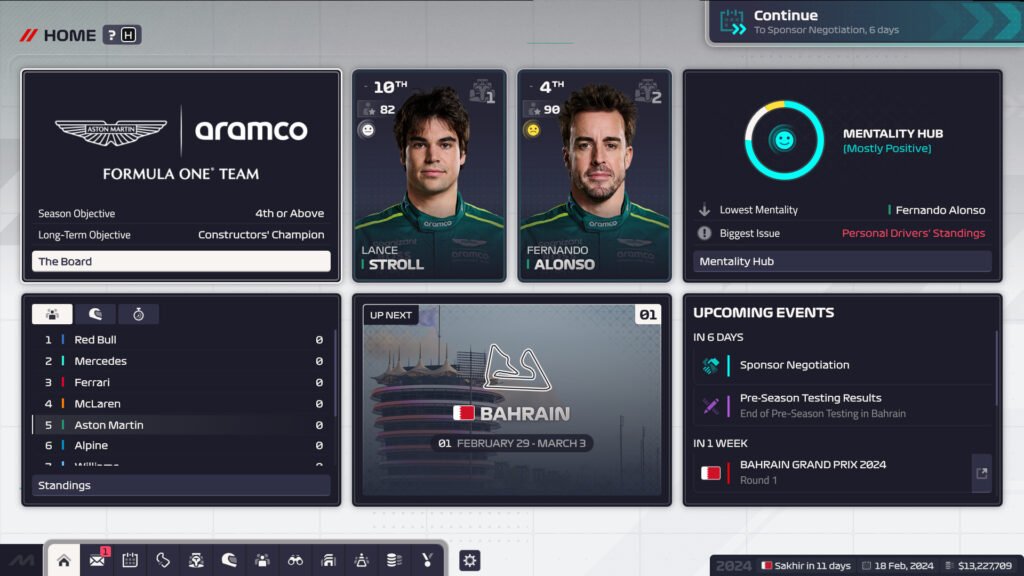
Development Tips
With car development playing such a pivotal role in achieving success, optimise this by improving your biggest weaknesses first, as they have a higher percentage growth potential.
Also, ensure you use all of your available CFD and wind tunnel hours during each ATR period. A lot of abbreviations there, but basically, an ATR period is a block of days where you can undergo a limited amount of aero testing.
In simple terms, you can use allocated CFD and wind tunnel hours to give a specific design project a performance boost, and this allocation resets for each ATR period. Don’t waste these, make sure every hour is used within each ATR window. You can even use all available hours on just one development part!
Whether you spread them across multiple development parts or focus them all on one for a super-sidepod or something, it’s up to you, but I tend to go all in on one straight away so I don’t have to think about it.
When deciding on engineer allocations and whether to rush a development part or not, it’s worth checking the race calendar. It might be worth putting all engineers on a part and rushing it if this will allow you to design and manufacture it before a string of back-to-back Grand Prix for example. Remember that there’s no point leaving engineers available with no project slots for them to work on, so make sure you try and have as many as you can working at any given moment.
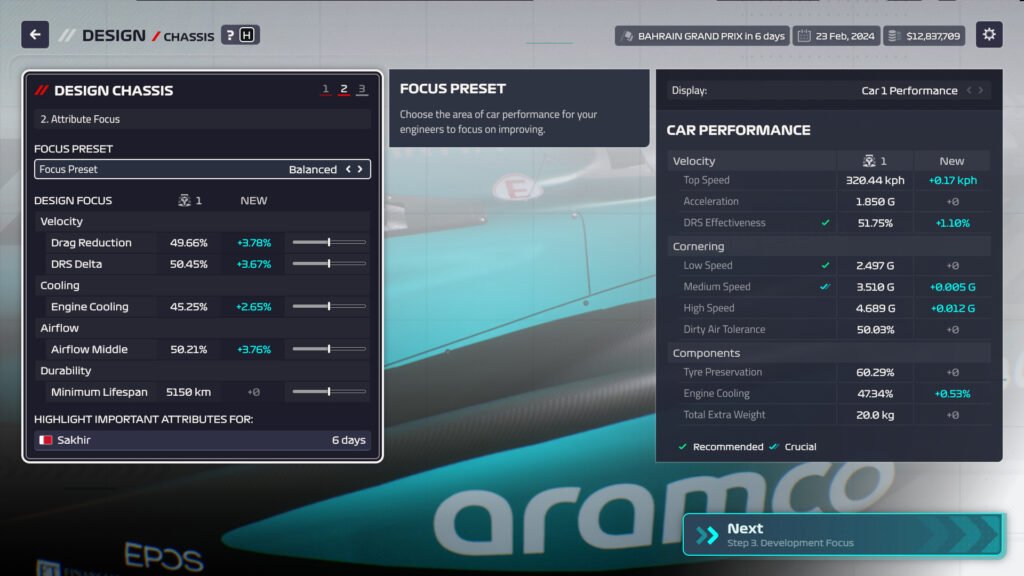
Resource Management
Manufacture new parts wisely too. There is no point in making four new front wings with the original design if your team is almost finished designing a new replacement. Wait for the new one to come in, then produce spares of those. It’s always worth keeping ahead of the game with certain parts: if one fails you will often find the other car will have a similar problem shortly, so always try and have two spares ready to go in the warehouse.
Powertrain parts can also be managed efficiently with some clever planning. It’s possible to switch out your engine and gearbox before each practice session and before qualifying on race weekend without penalty.
It’s a little tedious, but I would recommend switching in your worst or most worn engine and gearbox for use during the practice sessions when times are irrelevant. Then, just before qualifying, switch to your newer alternatives for optimum performance.
You can also ensure that drivers take it easy in those practice sessions by asking them to drive slowly, avoid using high kerbs and to use the low fuel engine mode. This helps prolong the lifespan of those practice engines.
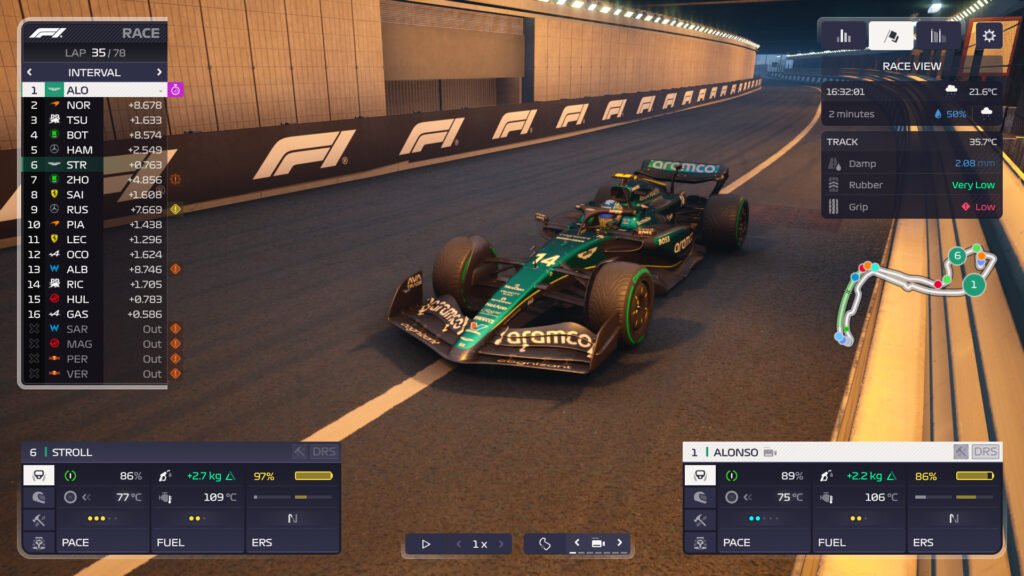
This management will see you with better race performance than your rivals throughout the season and a smaller chance of grid penalties down the line when others are taking new parts every weekend. A reminder though, don’t change your ERS component before qualie: unlike the engine and gearbox, this will give you a massive grid penalty.
Management of resources through a weekend extends to the tyres as well. Always try and save two new sets of softs for the race and do this by reducing your qualifying runs on new tyres. Send your drivers out in clean air for one run with around five minutes to go; if you feel you are safely through on run one, stay in the pits.
Or maybe even prepare the car for two flying laps on one set of tyres, which can often be the best way to make it through the knockout phases without burning all your rubber. Also remember, that there is no longer a rule in F1 about having to start the race on your qualifying tyre: you have free reign to do what you like so take advantage of that!
Extra race tips
Speaking of race starts, lap one is always the best for making up ground quickly. So why not start the race in full attack mode, with everything set to maximum? Instead of waiting until the green light to do this, you can actually pre-set this in the loading screen before the race starts.
Just remember to turn these settings back down again before the end of the first lap, otherwise, you will overheat everything and run out of ERS battery.
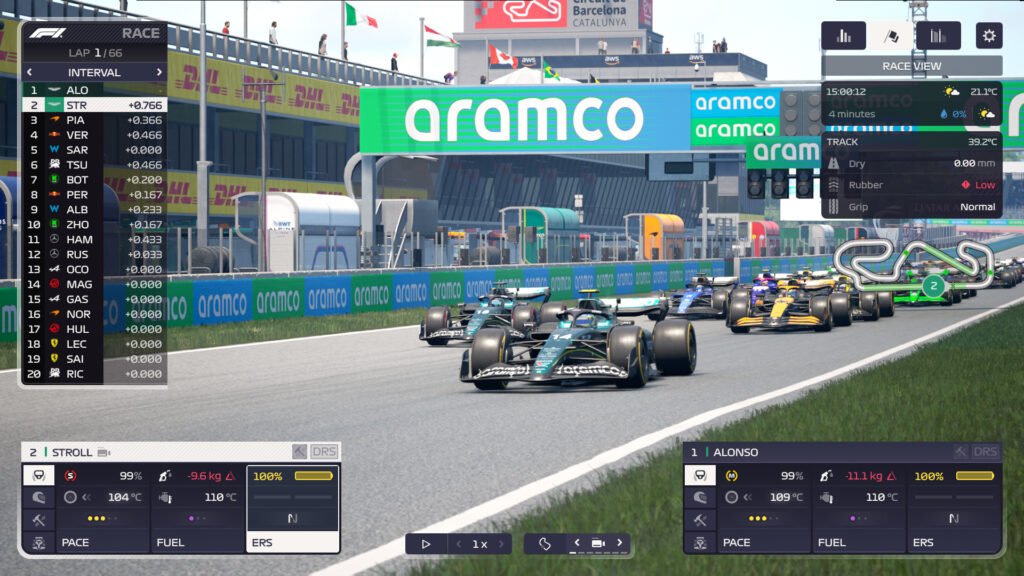
There is also merit in picking a race strategy that suits your team’s strengths and weaknesses. For example, my team’s car had horrendous engine cooling, so even when there was extra fuel to burn, we couldn’t use it without overheating the engine instantly.
So instead, I would start the race with about seven laps less fuel, making it a lighter, faster race car and forcing fuel saving, which suited us perfectly, as we had to do that anyway to keep the temperatures down!
Longer Term
Now for the really finicky stuff. Every so often, you will be asked to vote for a specific regulation change that might come into play the following season, so why not vote for a change to the weakest area of your car? That way, you will lose some of your relative disadvantages compared to others.
You can also decide when to switch focus from developing this year’s car to researching next year’s. Take a look at your goals and consider whether or not you will benefit from a stronger finish to this season or whether you are better off writing this one off and focusing fully on the next. You can also decide to spend all of your CFD and wind tunnel hours on one or the other, further exaggerating this tactical switch.
If you want to dominate for years to come, you will need to invest in younger talent through your affiliate programmes. After all, veterans like Fernando Alonso and Lewis Hamilton will start deteriorating almost immediately.
Sign up the best young talent there is by scouting them and finding out what sort of contract they are looking for before offering it to them. Get it right the first time and they are more likely to accept.

If you go for really young talented drivers who aren’t currently affiliated with a rival, they are often willing to sign long-term contracts starting the following year for the minimum possible wage, and with massive breakout multipliers should someone try to steal them from you in future.
You can even opt to replace your ageing driver lineup immediately before the season-opening race, so long as their replacement is a free agent. If the driver you want is already signed up but you still want them in the car as soon as possible, wait until after the Australian GP and try again. Even after just three races, you might well be able to poach them for an immediate race seat.
We all love seeing driver market shakeups. The roster for our second season included Hamilton at Ferrari, Sainz at Williams and Perez leaving the sport to be replaced by Taylor Barnard. What happened in your save? Let us know in the comments below!
Final Tips
When playing F1 Manager 2024, we recommend saving your game regularly from the pause or options menu. Create a save slot so that you have a fixed point in time that won’t be replaced by the autosave feature. This means that if you get something wildly wrong or even just mis-click, you can give it another go. You can even save your game mid-race, so you don’t have to worry about leaving things on pause if you are heading out for dinner.
Even if you don’t save and make some regretful team decisions in your first season, like re-signing Logan Sergeant and bankrupting yourself for instance, you can switch teams at the end of the first full season without a full career restart. However, you can only select those based on your management level – if it’s too low, you are not becoming the next Frederic Vasseur. Not yet anyway…
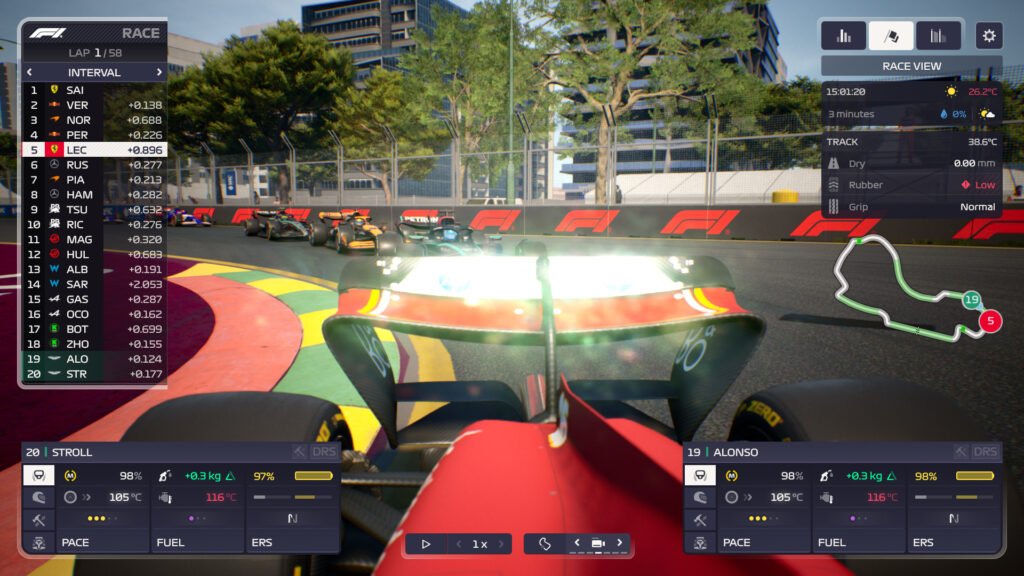
Finally, and for the first time outside of career mode, you should have a go at some of the race replays, moments and exclusive scenarios. They are a great place to learn the gameplay mechanics and experiment without the consequences.
You can be super bold with your strategies, going all-out attack or even sacrificing one of your drivers so that the other can meet the required objective. I once deliberately forced Magnussen into getting a puncture to try and bring out a safety car for Nico Hulkenberg to make a well-timed pitstop. It didn’t work, but it was quite funny.
Conclusions
So that’s it, our comprehensive collection of F1 Manager 2024 tips and tricks. We hope you enjoy your own career experiences and do make sure to let us know in the comments if you have any tips and suggestions of your own.
We also want to hear about some of the wacky moments and driver transfers you encounter as you play. Join the conversation on our Discord server too!





Chat with the Community
Sign Up To CommentIt's completely Free